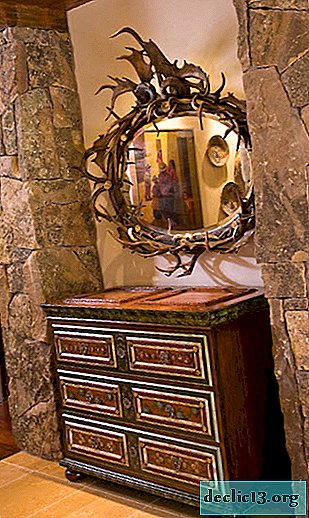Errors in the design of kitchens
When planning and arranging a kitchen, people often make mistakes that adversely affect the convenience and functionality of the interior. Although it may seem that the design of the kitchen is a simple task, it is still worth recalling several important steps taken in its arrangement. What omissions occur most often and how to avoid them? What should I look for before creating a completely new kitchen?
Lack of a clear budget and kitchen planning can be a major repair mistake
The first and most important step in carrying out repairs is to accurately determine the budget for repairs and the project. Knowing the limits of your capabilities, you can easily choose the right materials and equipment that you will use.
Another important point is to adhere to the principles of kitchen ergonomics. The person designing the kitchen should not forget about the details that can cause discontent and nervousness during everyday kitchen activities. First of all, functionality is important, as well as the right aesthetics, adapted to your lifestyle.
It is worth paying attention to things that seem obvious at first glance:
- the correct height of the surface of the countertop;
- correctly selected distance between kitchen utensils;
- aesthetics of the overall design;
- lighting;
- colors of facades and walls.

No zone separation
Each kitchen space should contain 5 main areas:
- stocks;
- storage;
- the washing up;
- food preparation;
- cooking food.

The principle of the working triangle is not fulfilled
Zones should follow each other - in the case of a right-handed person, clockwise, in for a left-handed person - in the reverse arrangement. In addition, the distances and the so-called working triangle, that is, the corresponding distance from:
- a refrigerator;
- sinks;
- the oven.

In order for the kitchen to be fully functional, the distance between the devices in the so-called kitchen triangle should not exceed:
- from the refrigerator to the kitchen sink 120-210 cm;
- from the kitchen sink to the oven 120-210 cm;
- from the oven to the refrigerator 120-270 cm.

Remember! Too small distances between the stove and the sink, as well as between the sink and the refrigerator are very inconvenient. On the other hand, the problem may be in too large distances. Climbing miles between the fridge, oven and sink can be tiring.

Wrong height of kitchen furniture
The kitchen island is an effective solution for large rooms. On both sides of the sink, work surfaces must be provided on which products or prepared meals will be stored. The height of the countertops, their respective area and placement of equipment is also very important.
Advice! In principle, the height of the kitchen furniture should be adapted to your height, that is, 10-15 cm below the height of the elbow, with a tolerance of a couple of centimeters when several people use the kitchen.

Using single row planning
Many designers consider a single-row layout to be a mistake, because the user in this version needs to overcome long distances. In this embodiment, there is no rule of the kitchen triangle, which primarily affects the functionality of the space. Although in some cases, maintaining suitable distances between the equipment greatly facilitates the work.
Advice! The most convenient layout of the kitchen is one that takes the form of the letter U, L or G.

Incorrectly configured equipment
Putting an oven or even a microwave over a dishwasher is a terrible idea. Water vapor rising from the dishwasher will damage the equipment mentioned above and will void your warranty.
Poor storage organization
Each item, regardless of whether it is equipment, food or utensils, must have a place in the kitchen to which you provide convenient access. This will help maintain order and improve kitchen utilization. The practicality of the cabinets should be taken into account. First of all, you should remove objects from the surface that take valuable useful centimeters and violate harmony.

Advice! "Horizontal planning" is very important in the proper design of the kitchen. In cabinets at a height, it’s worth putting those things that are used less often. The same applies to the lowest parts. Appropriate equipment setup saves you from unnecessary movements and search for items that are currently required.

Cabinets located in the corners, due to a problem layout, should have a well-chosen internal system, thanks to which it is easy to remove objects from visibility. In the narrow places of the cabinet you can place shelves, thanks to which you can hide bottles and cans.
Insufficient lighting
This applies to both natural and artificial lighting. The kitchen requires good light to make everyday tasks easier. Remember the correct location of the lighting: it will not do without an overhead lamp illuminating the entire room, and a point device for certain areas.
Good lighting is very important in the kitchen. The main light should not be too intense, you should choose a lamp with a warm enough color. Work surfaces should be illuminated by an additional source. It is worth using various types of fluorescent lamps or LED lamps, which are ideal for installation directly above the countertops.
Few outlets or located in uncomfortable places
When planning the placement of outlets, you must remember how many household appliances in the kitchen you need to connect to electricity. Know that sockets are designed for large appliances such as a refrigerator, an oven or a dishwasher, but also for small household appliances on a rack — a coffee machine, kettle, or toaster.
The use of impractical material in the decoration
When planning a new house or furnishing an apartment, you cannot think about the kitchen at the very end. Any distribution of electronics or plumbing, as well as the corresponding design of walls, floors and ceilings, can affect the functionality and practicality of your kitchen. For example, wooden floors are not very suitable for this room. It is better to use tile or linoleum.
A kitchen is, first of all, a utility room, so the choice of materials and furniture should be determined mainly by practical values and functionality. This, of course, does not mean that you should abandon the seemingly impractical elements. For example, a wooden work surface can be excellent, it is quite simple to protect. You should also remember that the kitchen is a complex room, and some materials or equipment simply are not suitable for it.





















